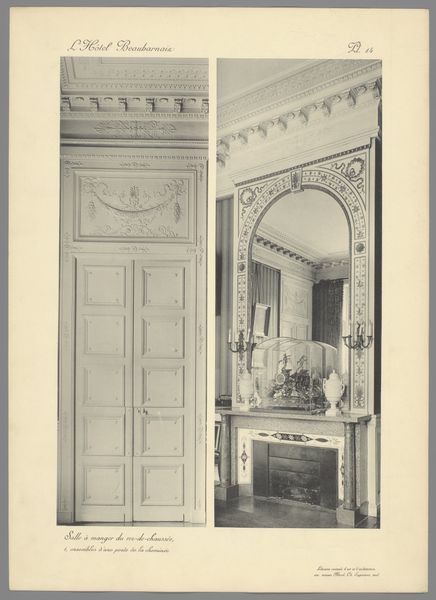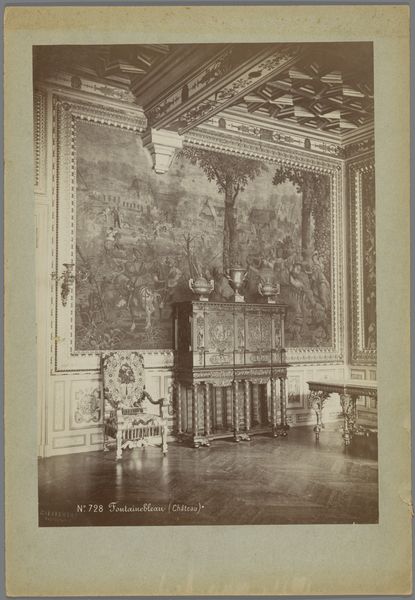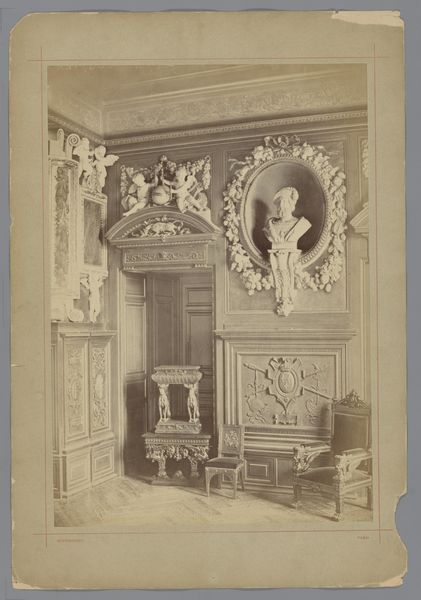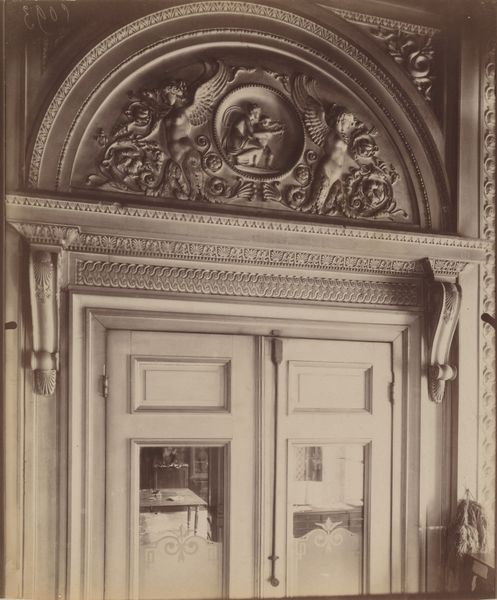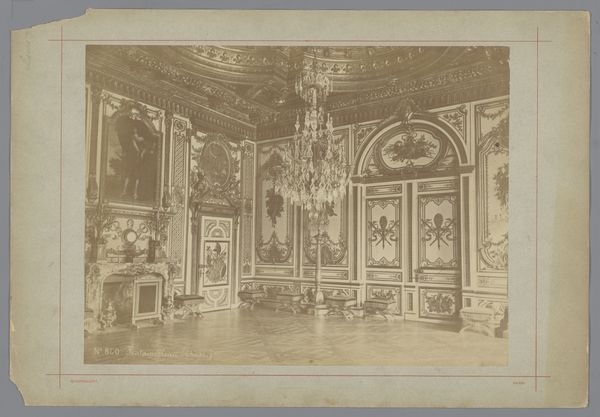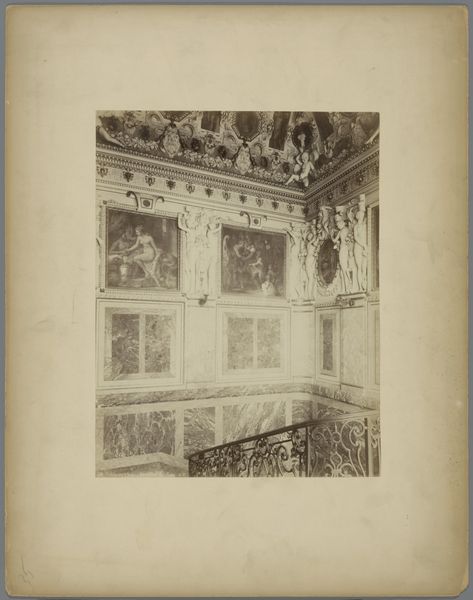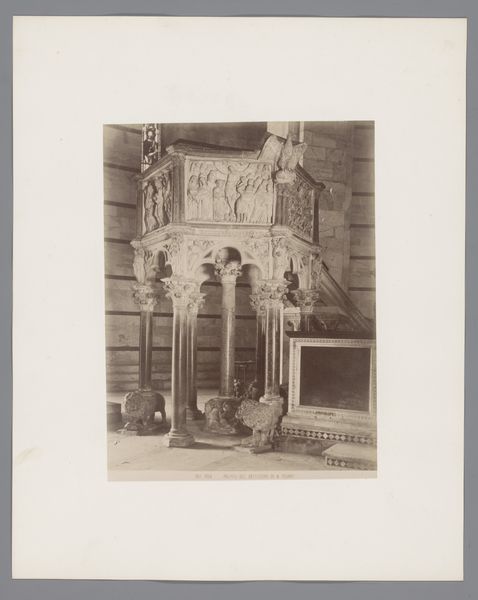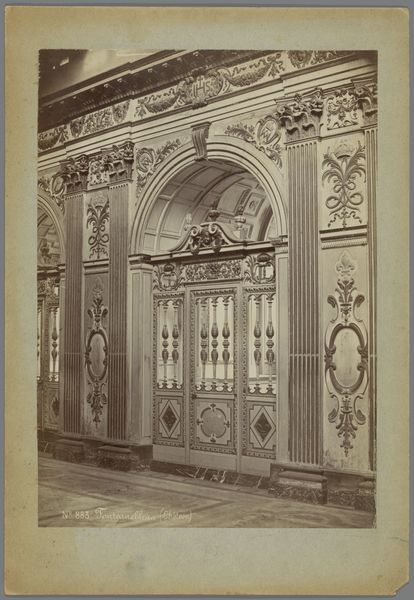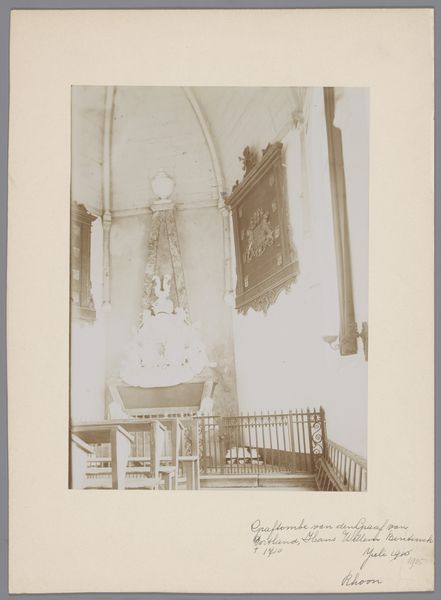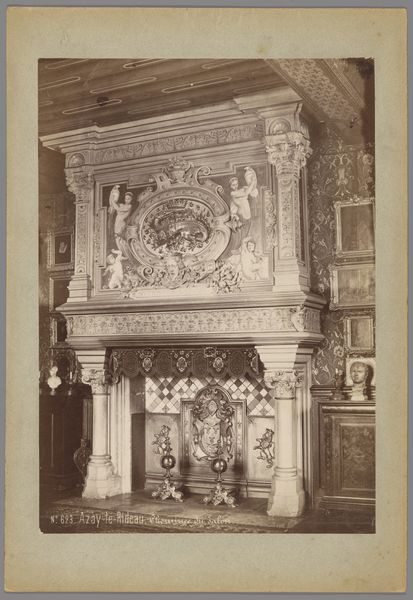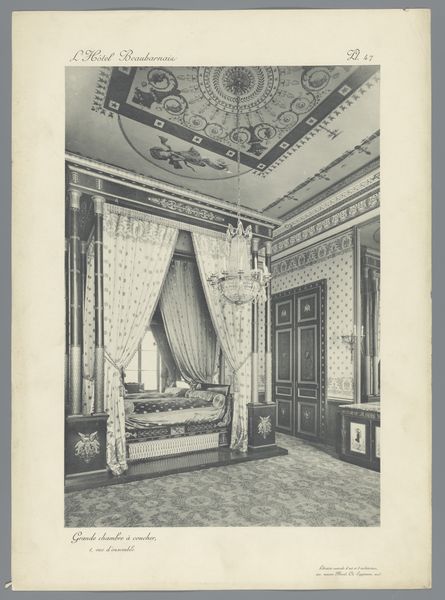
Dimensions: height 272 mm, width 209 mm, height 405 mm, width 306 mm
Copyright: Rijks Museum: Open Domain
Anselm Schmitz’s photograph, "Kandelaar in trappenhuis, Neurenberg," captures a chandelier in a stairwell in Nuremberg, Germany, sometime in the late 19th century. Captured by Schmitz, the image is emblematic of the period’s fascination with ornamentation and grandeur. The space shown is adorned with sculptures, marbled walls, and elaborate ironwork, revealing an obsession with status and wealth. However, the figures, like the chandelier, are frozen, untouchable, and silent. How are we to consider the figures represented, and those that may have been exploited in service of such blatant displays of opulence? As viewers, we might question what this image hides: the labor, the social inequalities, and the lived realities that this opulence obscures. It serves as a document of a society grappling with new industrial wealth, yet also a reflection on the human cost of these transformations.
Comments
No comments
Be the first to comment and join the conversation on the ultimate creative platform.
